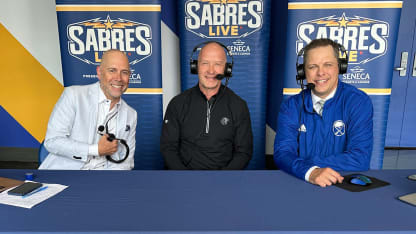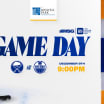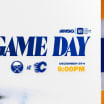1. A hands-on role
Kekalainen spent the last 15 months away from the day-to-day grind of the NHL following his departure from Columbus. He referred to the time away as one of the most educational periods of his life, dating back to his days as a management major at Clarkson University.
“I think it was the best decision I made, just to take some time off and reflect and learn from my experiences, my mistakes,” he said.
"... I’ve been in the hockey business since 1995 non-stop and never had this opportunity to take some time off and learn and just be better. I’m a big believer that the day you think you have nothing else to learn or nothing more to learn, that’s the day you’ve got to retire. I’m definitely not there yet, so it was a great year and three months.”
Kekalainen said he interviewed for jobs around the NHL prior to joining the Sabres. He listed conversations with general manager Kevyn Adams and owner Terry Pegula and a belief in the Sabres’ roster as reasons he accepted the opportunity – along with the hands-on nature of the role in the Buffalo front office.
“The role is important for me, because I didn’t want to be looked at as somebody who’s retiring or doesn’t want to do work,” he said. “I want to be one-hundred-percent in, 24/7, doing everything I can to help Kevyn and the Buffalo Sabres. That was a big part of why I wanted to join.”
2. Aggressive, but calculated
Kekalainen’s tenure in Columbus included five trips to the playoffs, including a three-year stretch from 2016-17 to 2018-19 in which the club averaged 101 points.
During that period, Kekalainen supplemented a homegrown roster headlined by Cam Atkinson, Alex Wennberg, and Zach Werenski with a series of high-profile trade acquisitions including Seth Jones, Sergei Bobrovsky, Matt Duchene, and Artemi Panarin.
Kekalainen was asked Friday how aggressiveness factors into his identity.
“I think I’m aggressive when it’s the time and place to be aggressive, but also I’d say I’m pretty analytical and I have the poise to also look at the situation and take a step back and analyze it rather than reacting into something just because you feel like something’s got to be done,” he said.
“But if the situation, the opportunity’s right, I can be aggressive. It all depends on where the team’s at in its development and growth, and then when the window opens, I think you need to be aggressive because the window to win with a team is never open forever. It’s that certain period of time, your core players’ prime, and that’s when you need to be aggressive to make sure you surround them with the right mix to win.”



















